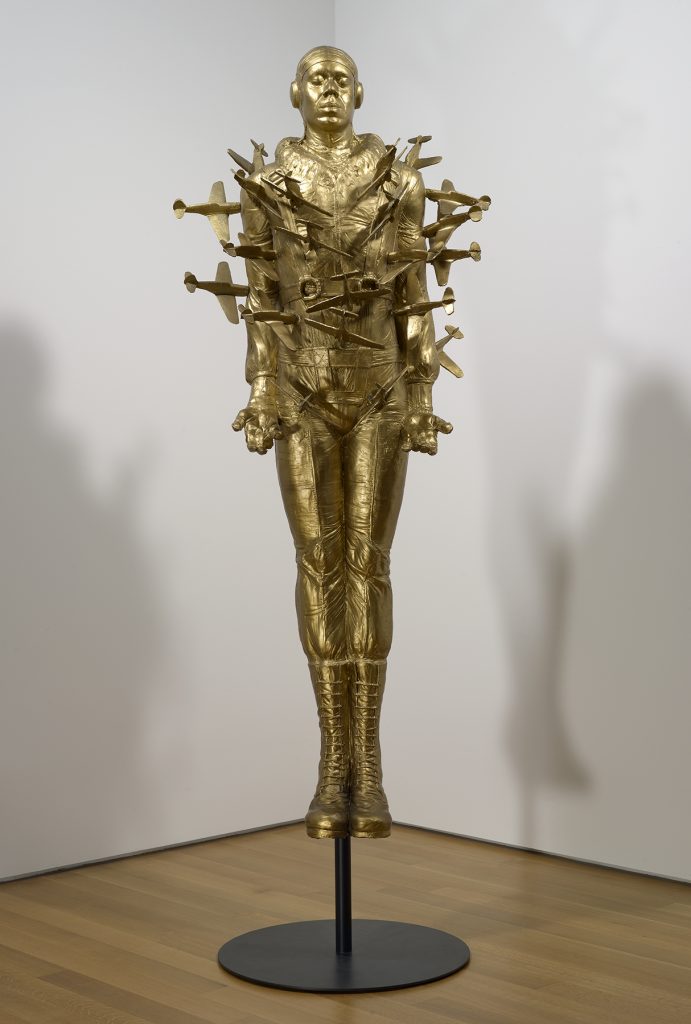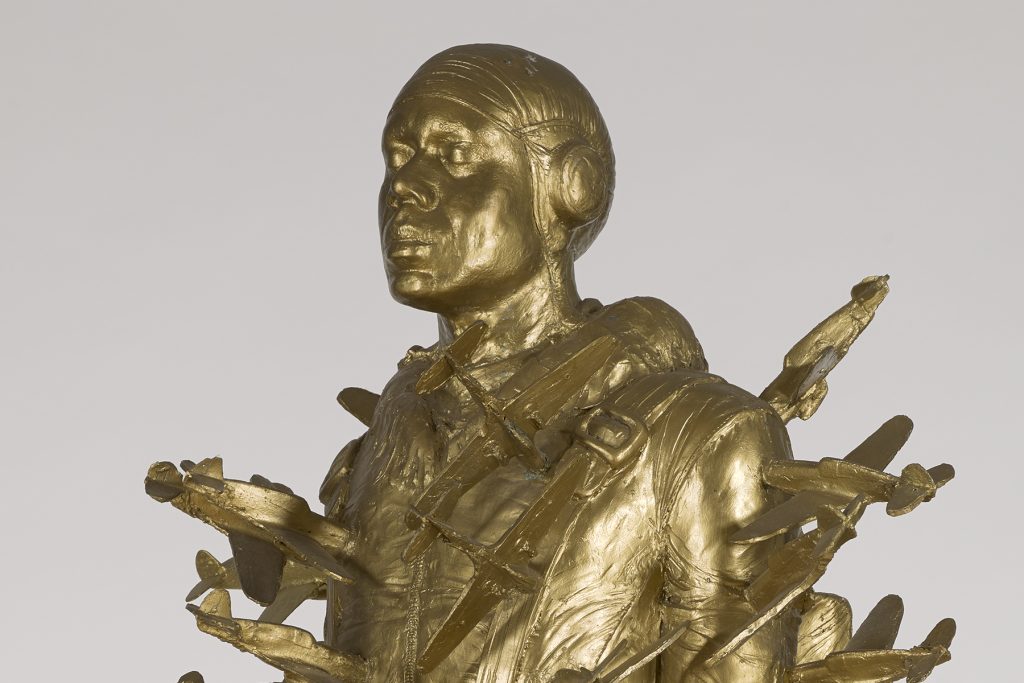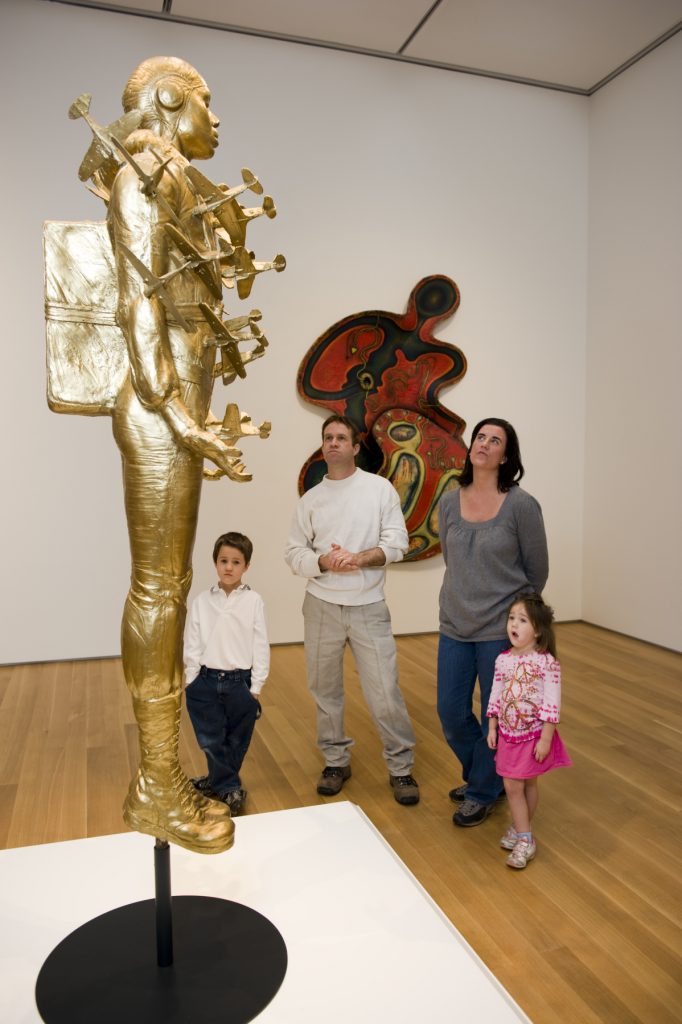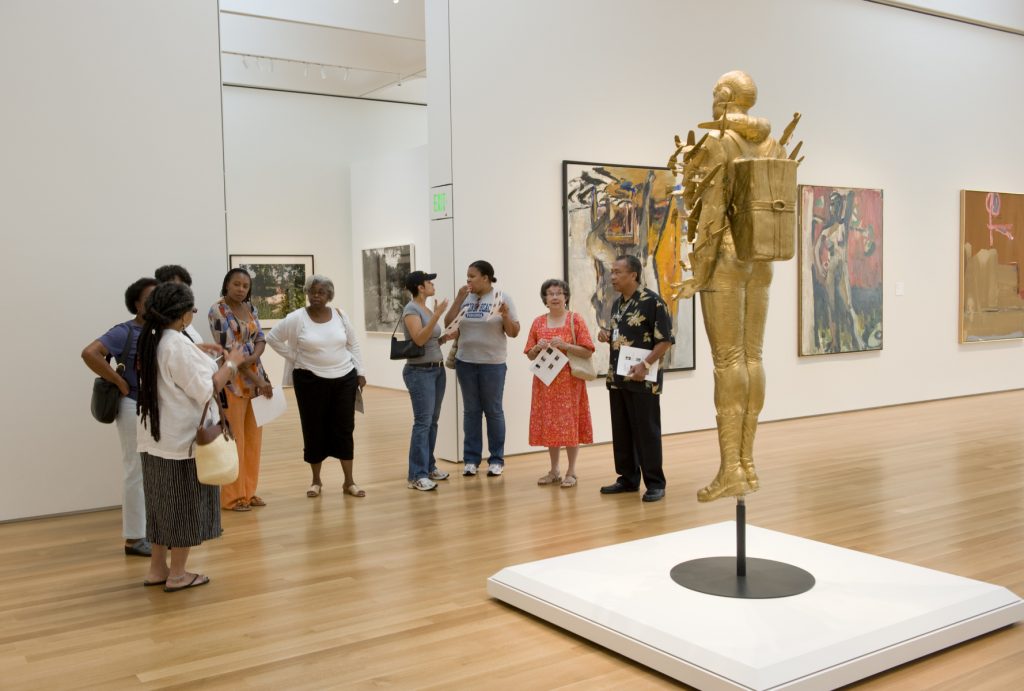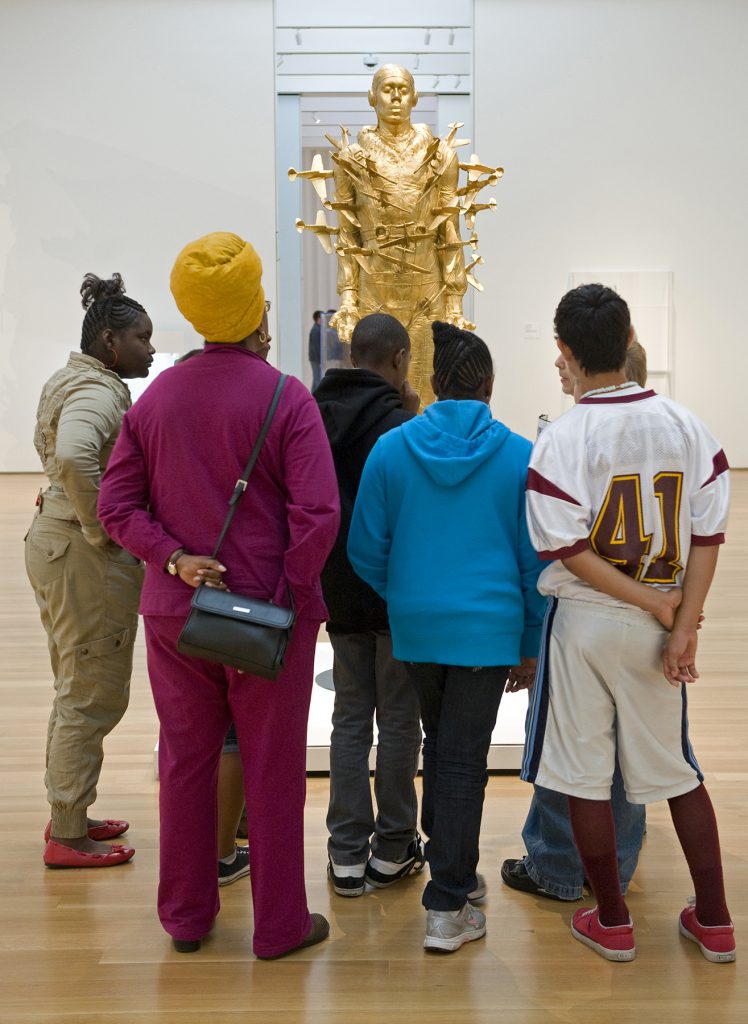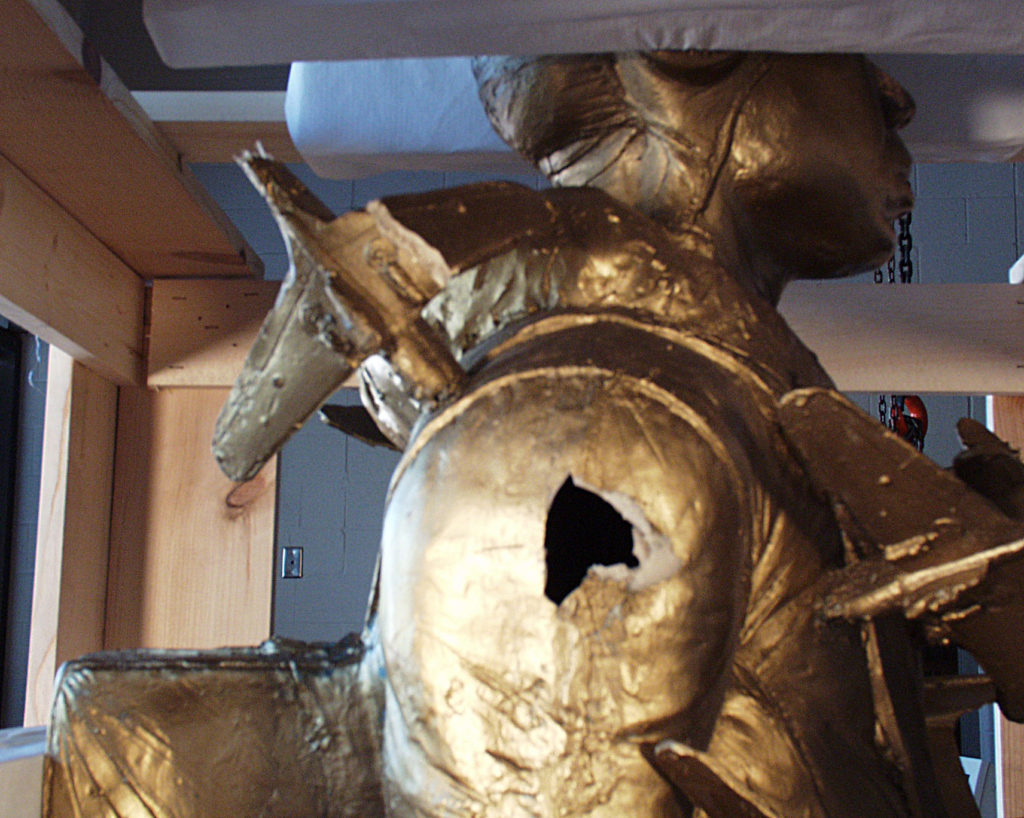Tar Baby vs. St. Sebastian (work of art)
Artwork Info
Key Ideas
- Using a cast of his own body, Michael Richards transformed himself into a gilded memorial to the Tuskegee Airmen, the African American flying squadron of World War II. The gold-painted figure, complete with a pilot’s helmet and uniform, is suspended on a metal pole and features dozens of small airplanes crashing into his arms and torso.
- The title of this sculpture refers to a Southern folktale and to the story of St. Sebastian, who was shot with arrows after refusing to deny his faith. Despite the innocent origins of the “Tar Baby” folktale, the term has become a derogatory term used against Black individuals.
- Michael Richards’s work pays tribute to the Tuskegee Airmen and to other historical and contemporary instances of racial inequality, such as the Tuskegee Syphilis Experiments and the beating of Rodney King.
- In 2001 Richards was killed in the 9/11 attacks on the World Trade Center while he was working in World Views studio during his Lower Manhattan Cultural Council residency. While it was intended to be a tribute to the Tuskegee Airmen, Tar Baby vs. St. Sebastian has become a memorial to the artist himself.
Learn More
For most of his career, Michael Richards created sculptures and art installations that paid tribute to the Tuskegee Airmen, a group of African American Air Force pilots during World War II. Their heroism and bravery were not fully recognized until long after the war ended.
Tar Baby vs. St. Sebastian is a golden, glowing figure of a pilot wearing his helmet and uniform, mounted on a pole in a pose of supplication. His eyes appear to gaze at something beyond the viewer, and his body is pierced with numerous small airplanes. The title of the work refers to both the story of “Tar Baby” (a Southern folktale of entrapment) and the story of a soldier (Saint Sebastian) who became a saint after he refused to deny his faith and was shot with arrows.
The conservation treatment of this sculpture included replacing two of the gilded aircrafts that were damaged. Research identified them to be P-40 Tiger Sharks, which were actual planes used by the Tuskegee Airmen. NCMA Conservator Perry Hurt, a model airplane enthusiast since childhood, used models to replace the damaged originals.
Michael Richards died on September 11, 2001, in his studio on the 92nd floor of Tower One at the World Trade Center. Cast from the artist’s body, Tar Baby vs. Saint Sebastian is, in effect, a self-portrait that serves as a memorial to his life and work.
Additional Resources
Resources for Teachers:
- Read an article to discover the deeper meaning behind the “Tar Baby” folktale.
- Explore resources about the Tuskegee Airmen from Tuskegee University.
- Learn more about Michael Richards’s life and career.
Resources for Students:
- Watch a video about the Tuskegee Airmen.
- Listen to the story of Saint Sebastian.
- View a sculpture of Saint Sebastian. In what ways is it similar to and different from Tar Baby vs. St. Sebastian?

